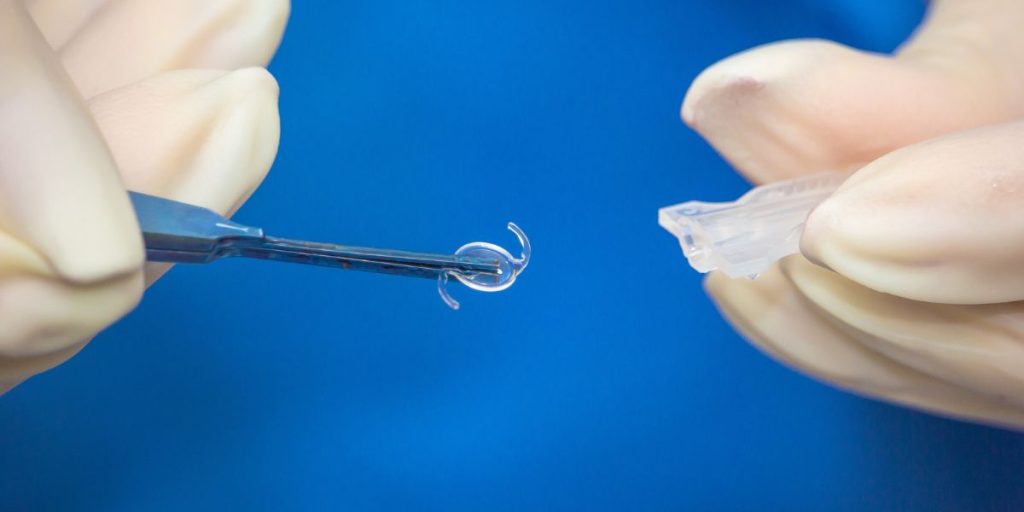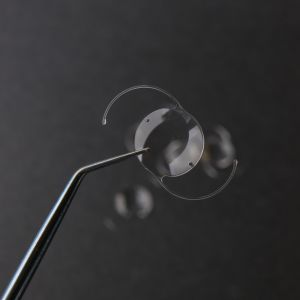Cataract surgery is one of the most common and widely performed surgeries worldwide. In the United States alone, more than 3.5 million cataract surgeries are performed annually. Globally, the number reaches over 28 million procedures a year. About 90% of people will develop cataracts by the age of 65. Like other age-related degenerative conditions, the chance of cataracts occurring increases the older you get.
Cataract surgery restores clear vision and becomes necessary when the eye’s natural lens becomes cloudy, thus impairing vision. The surgery removes the cloudy lens (called cataract extraction) and replaces it with a clear artificial lens called an intraocular lens.

Outpatient cataract surgery takes about 20 minutes, with minimal recovery time and generally no side effects or serious complications. It has a success rate of over 95%. Aftercare is usually just a follow-up appointment and antibiotic eye drops for several days.
With premium cataract surgery, that clear lens can provide amazing vision correction and even eliminate the patient’s need for reading glasses or contact lenses.
Why do intraocular lens implants stop working?
Intraocular lenses used in cataract and RLE (refractive lens exchange) surgery are designed to last a lifetime. However, there is about a 5% patient dissatisfaction rate, and about 3% undergo a second surgical procedure called an IOL exchange or intraocular lens exchange.
Several reasons and risk factors can explain why an IOL can go bad. However, the more experienced the surgeon, the fewer complications their patients tend to have during cataract surgery. You want your surgeon to be prepared to handle any potential issues, such as performing a vitrectomy if your eye’s capsular bag integrity is compromised. If this is not possible, they need to know how to place the new IOL in the sulcus or anterior chamber.
The causes for needing IOL exchange surgery include:
The patient is not a good candidate
Sometimes, pre-existing problems such as significant macular degeneration (part of the retina), prior ocular surgery (such as an Nd:YAG posterior laser capsulotomy), and lazy eyes can preclude a patient from getting many IOLs.
A surgeon with a deep knowledge of problematic eye conditions and the characteristics of all the IOLs on the market can save a patient’s potential problems.
Poor quality intraocular lenses
Some patients who come to AGEI for this type of surgery have artificial lenses implanted with bad optics (blurry vision and halos), causing poor visual outcomes. This is usually due to the quality of the polymer used to make the IOL not being a good match for the individual’s cornea.
The patient usually suffers from “Vaseline Vision” (dysphasia). A new lens typically brings about excellent vision.
Poor lens choice for the patient’s cornea
Some patients who come to us for IOL revision surgery were given a lens that was not appropriate for the steepness of their cornea. The solution for these problems can be as simple as our LASIK surgery for farsightedness.
Posterior capsular opacification (PCO)
The most common issue associated with IOLs is posterior capsule opacification, also known as a “secondary cataract.” This occurs when a part of the lens capsule thickens, causing blurred vision. It can occur months to years after surgery.
This isn’t technically an actual lens failure, and the new IOL has not become cloudy. PCO occurs when epithelial cells from the natural lens, left behind during surgery, proliferate and migrate onto the posterior capsule (the thin membrane that holds the intraocular lens in place).
This gradually clouds the capsule behind the IOL, which can cause blurred vision, glare, or halos, similar to the original cataract symptoms. Fortunately, this is easily treated with a straightforward laser procedure.
Lens dislocation
A dislocated intraocular lens, which generally occurs more than three months after cataract surgery, can result in the patient experiencing blurry vision, halos around bright lights, or double vision.
Some of the causes of this postoperative complication include:
- Inherited connective tissue disorders (e.g., Marfan syndrome, hyperlysinemia, homocystinuria, Ehlers-Danlos syndrome), capsular contraction
- Surgical trauma
- Repeated eye infections
- High myopia (severe nearsightedness)
- Facial or eye injury
- Retinitis pigmentosa
- Eye inflammation
- Conditions that make the capsular bag unstable, such as pseudo-exfoliation syndrome
- Family history of Marfan’s syndrome, a genetic disorder that affects the connective tissue in your eyes and other parts of the body
- A history of retina surgery or injection therapy
If a lens dislocates far into the back of the eye, a retinal surgeon must perform a vitrectomy to ensure the retina is not damaged before removing the lens.
Intolerable glare and light sensitivity
Those who experience a painful glare and light sensitivity generally receive a lens mismatched to their eye shape. Once again, this can typically be prevented by going to a very experienced surgeon.
Untreated inflammation
If inflammation occurs and is not treated correctly, it can cause poor vision and swelling of the cornea.
Endophthalmitis or infection
Though not directly a cataract lens problem, an infection after cataract surgery can negatively affect the overall outcome. If the infection becomes severe, the IOL may need to be removed.

Sophisticated instruments allow AGEI to gather accurate measurements and prevent artificial lens implant failures
It would be an understatement to say that the accuracy of preoperative and operative measurements associated with artificial lens implants is essential to an excellent visual outcome.
Assil Gaur Eye Institute has invested in cutting-edge technological advancements to achieve the most accurate eye and lens measurement possible. These include:
Intraoperative Aberrometry (ORA)
Ora is a tool that allows surgeons to take refractive measurements in the operating room during surgery, both aphakic (without a lens) and pseudophakic (with a lens in the eye).
Our own Dr. Kerry Assil assisted Alcon in developing and testing this technology and was the first to use it worldwide. The ORA system allows our surgeons to confirm that they have selected the ideal IOL for optimal vision correction and the perfect lens placement location in the eye. Since a large percentage of IOL exchanges are attributable to incorrect IOL power, the importance of the ORA system must be balanced.
Typically, surgeons have no recourse but to use the best lens based on measurements before surgery. However, because AGEI uses the ORA technology and has a vast inventory of almost every power for each type of IOL implant, they can make any correction needed while the patient is still in the operating room.
IOL Master
IOL Master is the gold standard for optical biometry (a highly accurate, non-invasive, automated method for measuring the anatomical characteristics of the eye). It is used to help with intraocular lens power calculations by measuring the eye’s anatomical features, such as axial length, corneal curvature, and anterior chamber depth. All these are essential for calculating the correct power of intraocular lenses (IOLs) during cataract surgery.
LensAR Femtosecond Laser
The LensAR Femtosecond Laser is an advanced laser system used in ophthalmology, specifically for cataract surgery. Also known as laser-assisted cataract surgery, this laser is designed to perform critical steps in the laser eye surgery process with high precision, enhancing the safety and effectiveness of the procedure.
This system captures ten images at different angles, giving our surgeon a 3D image of the cataract, revealing its thickness and density.
The femtosecond laser softens the cataract by fragmenting the lens with highly accurate and reproducible cuts and fragments. This leads to far better outcomes than can be expected without it. It also reduces surgical time by automating and optimizing key steps. The laser’s precision maximizes safety by minimizing the risk of complications, often leading to quicker recovery.
Schedule your consultation today with the internationally recognized doctors at AGEI
Or call
866-945-2745
Why trust AGEI to correct any issues you may have from cataract surgery or refractive lens exchange surgery
With over 30 years of experience, Dr. Kerry Assil and his partner, Dr. Avneet K. Sodhi Gaur, are among the most experienced cataract surgeons in the United States. Dr. Assil has performed over 70,000 eye surgeries and authored over 100 textbook chapters on vision problems and articles on refractive errors and cataract surgery.
If your IOL implant is no longer helping your vision, don’t despair. Often, patients searching for a revision turn to AGEI because they want their IOL to give them a clear vision.
Assil Gaur Eye Institute has assembled a team of top ophthalmologists from around the country who offer their patients the highest quality of specialist eye health in the United States.
In keeping with AGEI’s founding principles, eye surgeons keep their clinics comfortable and familiar, much like family-run medical practices used to be.
We offer state-of-the-art eye exams, premium cataract surgery, and refractive lens exchange (RLE) using the best-chosen lens for each patient. These lenses include extended depth of focus IOLs, multifocal IOLs, and monovision / monofocal lenses (often to correct for distance vision or near vision).
In addition to refractive lens exchange and cataract surgery, the ophthalmology experts at AGEI are nationally recognized for their eye care and treatment options for a full range of conditions, including eye conditions such as hyperopia glaucoma, retinal detachment (and other vision loss retinal procedures), cornea conditions, floaters and flashes, dry eye, presbyopia, astigmatism (using a toric lens), farsightedness, myopia, nearsightedness, and other vision correction procedures (refractive surgery) such as LASIK surgery, PRK, and blurred vision.
There is a solution, and we invite you to contact us for a consultation. Please call (866) 945-2745 or make an appointment online.
Our eye centers are conveniently located for patients throughout Southern California and the Los Angeles area in or near Beverly Hills, Santa Monica, West Los Angeles, West Hollywood, Culver City, Hollywood, Venice, Marina del Rey, Malibu, Manhattan Beach, and Downtown Los Angeles.
Intraocular Lens (IOL) FAQs
Can a lens fail after cataract surgery?
Though rare, a lens can fail or have complications after cataract surgery. The failure can manifest differently depending on the intraocular lens (IOL) issue.
Can a cataract lens be replaced more than once?
Yes, an intraocular lens (IOL) implanted during lens replacement surgery can be replaced more than once if necessary. Although rare, the IOL replacement procedure is called an IOL exchange. It is typically done when the original lens is causing significant visual problems or complications that cannot be corrected otherwise.
What should I do if I experience blurry vision after cataract lens implantation?
If you experience blurry vision after cataract lens implantation, it’s essential to determine the underlying cause. Blurry vision can be shared immediately after surgery as the eye heals, but if it persists, it should not be ignored! It is important to see your ophthalmologist.
How can I tell if my intraocular lens (IOL) has dislocated or displaced? What are the signs of lens dislocation after cataract surgery?
If your intraocular lens (IOL) becomes dislocated or displaced after cataract surgery, several signs and symptoms can indicate this problem. IOL dislocation can occur shortly after surgery or even years later. Here are some visual disturbances to look for:
- Blurry or decreased vision
- Double vision (Diplopia)
- Visual distortions such as glare or halos around lights, especially in low-light conditions like driving at night, ghosting or shadowing around objects, or changes in the shape or size of images, sometimes described as a “wavy” or “warped” appearance.
- Feeling of “lens movement” in the eye
- A sudden change in your prescription
- Visible IOL edge
- Astigmatism
- Persistent eye discomfort
Sources
Cataract Surgery Complications
https://eyewiki.aao.org/Cataract_Surgery_Complications
Vitreous Hemorrhage
https://eyewiki.aao.org/Vitreous_Hemorrhage
Visual Acuity Outcomes and Complications after Intraocular Lens Exchange
https://doi.org/10.1016/j.ophtha.2023.10.021
Ten Cataract Surgery Side Effects, and How to Cope – American Academy of Ophthalmology
https://www.aao.org/eye-health/tips-prevention/side-effects-cataract-surgery-complications-cope













